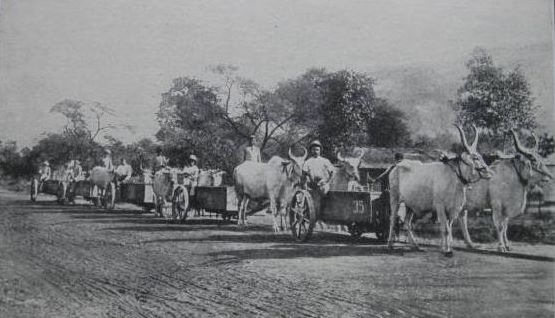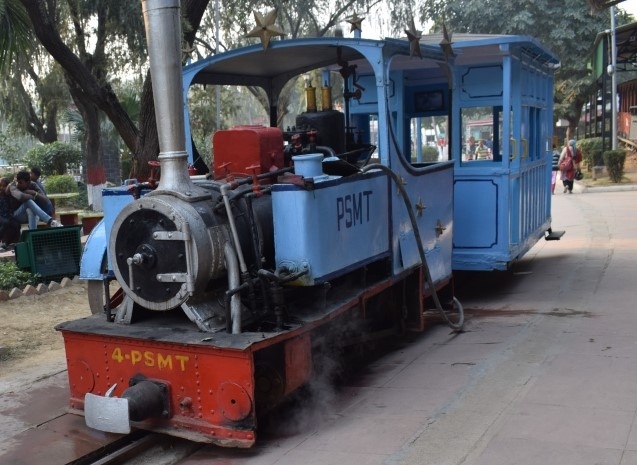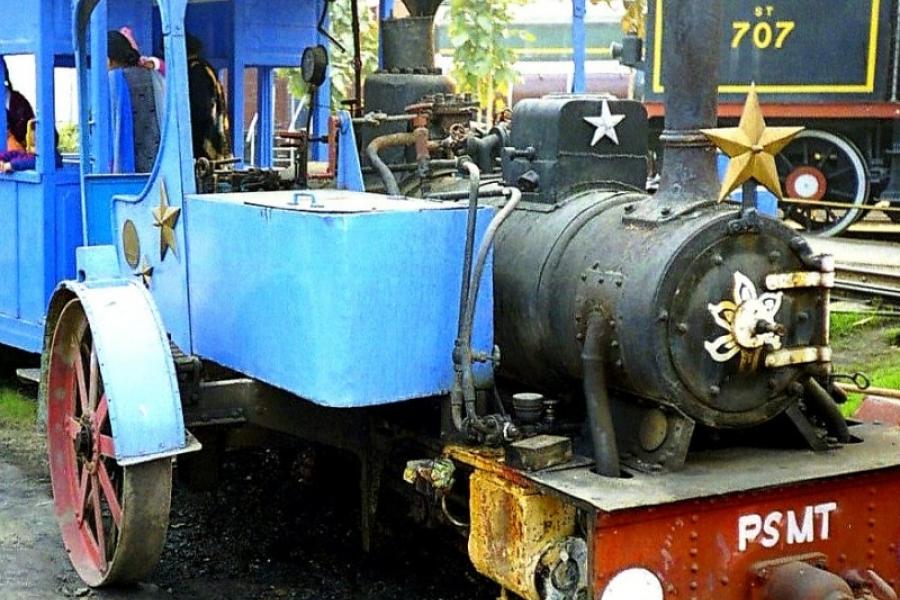Museum on Rail
The Patiala State Monorail Tramway
The Patiala State Monorail Tramway is the only remaining steam-run monorail in India. On International Museum Day, Sahapedia looks one of the iconic artefacts at the National Rail Museum that not only has an interesting history, but is still in use and is ‘steamed-up’ on a weekly basis.
In the poem ‘Gioconda and Si-Ya-U’, Turkish poet Nazim Hikmet wrote, ‘to visit a museum is fine/ to be a museum piece is terrible’.[i]While it is true that most objects in museums have been sentenced to a life within the confines of four walls to tell the tale of a bygone era, there are some pieces of history that continue to be a part of our lives—on occasion! One such object is the Patiala State Monorail Tramway (PSMT)—one of the ‘artefacts’ at the National Rail Museum, New Delhi—which is a unique monorail locomotive still in use.

Monorails have existed in India since the colonial era. The PSMT was the second monorail system in India after the Kundala Valley Railway in Munnar, Kerala. However, today, it is the world’s only operational locomotive-hauled railway built using the Ewing system. The monorail consists of a steam 0-3-0 locomotive (which refers to the three small wheels in the centre that roll on the single steel rail) and one balancing wheel that runs on a concrete strip to the right of the rail. In this system, the rail carries 95 per cent of the locomotive’s weight and the balance wheel, only five per cent.[ii]
This unique railway system was once part of the princely state of Patiala. The maharaja of Patiala, Sir Bhupinder Singh, commissioned the railway line to Colonel C.W. Bowles, an engineer, in 1907 to facilitate the movement of goods and people in his state.[iii] In a normal railway system, the two rails have to be on the same level to maintain balance, which takes more space and needs a uniform, level ground. However, using the Ewing system, since the balancing wheel did not need be on the same level as the rail, the use of a single rail reduced both the space needed and the cost of construction, thus making it a more economical option.
Interestingly, steam locomotives were attached to the trains of the PSMT two years after the system was established. Till then, these trains were hauled by animals. In fact, it is said that a major reason behind building the monorail system was that it could be used to employ the 560 mules and bullocks maintained by the state of Patiala on behalf of the Imperial Service Regiment.[iv] The animals and their drivers were kept on standby in case the British needed them, but the maharaja thought it was better to keep them employed rather than idle. Hauling monorail trains carrying goods and passengers seemed like a viable option.
![The PSMT used to run at an average speed of 13 kmph and could go up to a maximum speed of 30 kmph (Courtesy: AHEMSLTD~commonswiki [CC BY-SA 3.0])](https://shop.museumsofindia.org/sites//default/files/inline-images/Delhi_Railway_Museum_Monorail_05-02-17_M22_0.jpeg)
In 1909, four steam locomotives that were acquired from Orenstein & Koppel (a German engineering company)—and cost somewhere between £500 and £600 per unit—replaced the animals.[v] According to rail historian Shubhabrata Chattopadhyay, while the monorail run by animals only had two goods coaches, the steam-run PSMT had four passenger vehicles that could carry 18–20 people each and 30 goods wagons. By the time steam locomotives were introduced, the monorail covered a total distance of 80 km with two unconnected lines, Sirhind to Morinda and Patiala to Sunam. It ran at an average speed of 13 kmph and could go up to a maximum speed of 30 kmph, adds Chattopadhyay, who is with the National Rail Museum. At the time, the one-way fare for passengers was 1.5 annas per person and the transportation charge for goods was 1 anna per 80 kg.
However, with the advent of cars and trucks, the line was closed on October 1, 1927. While most of the abandoned railway equipment was fed to the furnaces, the PSMT’s equipment was simply forgotten. For 35 years, it remained in a Public Works Department (PWD) shed till it was discovered by rail historian Mike Satow in 1962. Satow was searching for the PSMT after reading about it in an article in Railway World magazine. Thanks to his discovery, this piece of history has not only been preserved, but also restored. One monorail locomotive (Number 4) was restored to full working condition by 1976 with the help of Northern Railways’ Workshop at Amritsar.[vi] After its restoration, it was brought to the National Rail Museum for display. In 2018, under Amit Saurastri, director of the rail museum, a single coach was attached to the PSMT locomotive, and this 100-year-old train was brought back into use for visitors.

Today, the Patiala State Monorail Tramway is the only remaining steam-run monorail in India. It is regularly ‘steamed up’ and run every Wednesday and Friday. Limited to 10 seats, visitors can now enjoy a ride on this vintage train.
This article was also published on The Statesman (Print). Sahapedia runs the project www.museumsofindia.org.
Notes
[i] Nazim Hikmet, Nazim Hikmet: Selected Poetry (New York: Persea Books, 2007), 15.
[ii] H.R. Ambler, ‘An Indian “Might-Have-Been”: Transient History of the Patiala State Monorail Trainway’, The Railway Magazine 814 (February 1969): 72–76.
[iii] Ibid.
[iv] Ibid.
[v] Ibid.
[vi] National Rail Museum, ‘PSMT,’ 2008, https://web.archive.org/web/20080509135002/http://www.nationalrailmuseum.org/new_nrm/newstarexhibits/psmt.asp (last accessed June 27, 2019).

